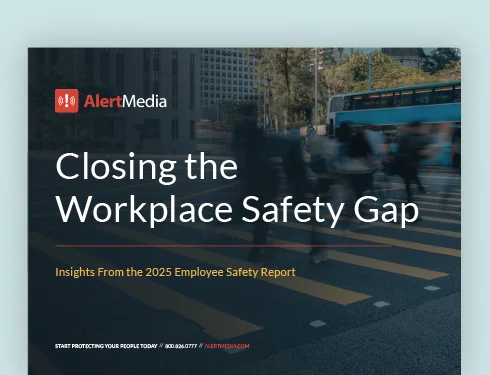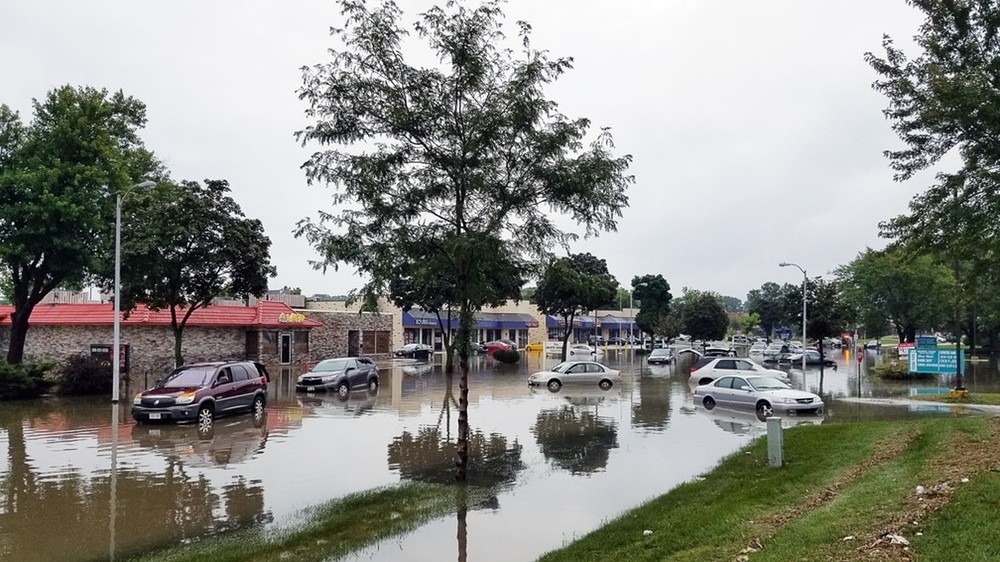
4 Must-Have Emergency Notification Message Templates
Save precious time with emergency notification message templates you can build ahead of the emergency and send across multiple channels.

The definition of emergency is “a serious, unexpected, and often dangerous situation requiring immediate action.” The key word here is “unexpected.” You can’t predict emergencies–but you can still plan for them if you understand your most likely threats. One crucial part of this planning process is creating emergency notification message templates. After all, even if you don’t know the exact nature or time of the next threat, you can be sure that you will be communicating with your employees. Having emergency notification message templates saves you precious time and bandwidth which you can allocate to more pressing needs.
The same goes for any emergency response strategy. Not every situation is predictable, but it’s wise to assess your current risks and make plans on how you would respond. That plan starts with message templates. In this post we will talk about the four most important types of emergency notification message templates–and even give you access to a few templates that we have built.
Get Ahead of the Emergency
Hopefully, by now, you have some type of mass communications system to alert your employees near and far of impending danger, and the plans to keep them safe and informed. What’s important in an emergency is that you have a way of activating your plan quickly and efficiently.
In a crisis, if you are having to custom-craft each message and build segmented employee lists, you’re losing precious time trying to reach your employees. These things can and should be done well before an emergency. Since emergencies are unpredictable, you must design these systems now so they can be deployed immediately. Being proactive is always better than reactive.
Does your emergency alert system offer notification templates that you can leverage? In addition to saving time, emergency notification message templates ensure your messaging is consistent. You should likely be using multiple communication channels to get your message out to employees–email and text message at the very least. Your message needs to be consistent across those mediums, even though the length and detail of the message may vary. The last thing you want to do is send conflicting messages that confuse an already chaotic situation.
The 4 Types of Message Templates
What types of message templates should you use and create? Here are four you will want to have on hand when the threats you assessed become a reality.
1. Evacuation procedures
It’s not enough to post an evacuation route on the back of a hotel door. What if your emergency prevents employees from leaving their office via a doorway, hallway, or stairwell? You must have specific evacuation procedures in place for various risks. This includes fires, active shooters, and flooding.
By developing individual evacuation templates per crisis, you can quickly select the appropriate template and simply click to send to the affected employees. No sorting, no writing, and no wondering if you’ve missed anyone. A successful evacuation requires reaching 100.0% of the affected employees. Missing even just one person will create a panic–then a scramble to identify who is missing and their whereabouts. To make sure you catch everyone, make sure you are using every communication channel available to you.
2. Inclement weather
Weather comes in all shapes and sizes, and it’s very dependent on your geographic location. No matter where you live, though, you need to be prepared for every type of inclement weather. Often the storm you are least expecting is the one that will cause the most damage to business continuity. Hurricane Florence showed us that. Many organizations in the Carolinas were caught completely off-guard–because they never thought that a hurricane would reach that far north. The businesses that had taken an all-hazards approach to emergency planning were the ones that took the hurricane in stride, activating their emergency response plans and utilizing their pre-built templates. Whether you live in a coastal area, the mountains, or the plains, you should have a specific plan in place for even the worst nature has to offer.
Emergency notification message templates are especially important when responding to inclement weather. If you have employees working in various locations, be sure you consider potential weather conditions in their immediate areas. You can use the templates to build your messaging and then utilize audience segmentation to group employees based on those locations. Tailor the warning messages to be relevant, and let the template ensure your employees receive them in a timely manner.
We’ve built specific emergency notification message templates for you to use with various types of natural disasters.
Hurricane Communication Templates (click here to download)
Hurricanes can be some of the deadliest storms nature has to offer. They move quickly, change directions unpredictably, and often behave in ways we don’t expect. Everyone knew Hurricane Harvey was going to be a massive threat; few expected its main damage to be the flooding it produced when it stalled over Houston for days on end. Hurricane templates need to be flexible enough to deal with the varied threats hurricanes can bring–plus messages that can be used before, during, and after landfall.
Wildfire Communication Templates (click here to download)
In recent years, wildfires have caused more destruction than just about any other type of natural disaster. California specifically has been ravaged by several devastating fires, which pop up out of nowhere and take days to contain. Camp Fire is the most recent deadly example. Because of how quickly wildfires form, message templates are especially critical. You won’t have time to develop streamlined messaging–when you are trying to juggle every other aspect of such a scary situation. Wildfire templates include messages that alert employees when a fire is in the area, when the office is closed, and when the fire is contained.
Winter Weather Communication Templates (click here to download)
Winter weather is the most consistent of the three threats. There are light hurricane seasons and varying numbers of wildfires each year–but there is always winter weather. Each year, blizzards march through the northeast all winter; even the south gets its share of winter weather once or twice a year. In fact, even just a few inches of snow can freeze operations in southern states where organizations are the least prepared for it. Winter weather templates primarily serve to inform your employees about decisions that upper management is making concerning office closures or delayed start times. They can also advise people to stay off the roads when it is unsafe to drive.
3. Building operations or maintenance
While building maintenance isn’t typically an emergency, sometimes emergencies can require building maintenance. Other times, maintenance may be scheduled and very predictable. In either case, your employees will need to know what’s happening in their building, particularly if it may impact their ability to do their job, where they may need to park or enter the building, or where they may need to perform their work.
Anything from broken air conditioners to downed servers can require a mass notification. Use templates to set up messages for different scenarios, so that when the AC goes out, you just have to click a button to let employees know things may get a bit uncomfortable but workers are rapidly working to fix the problem.
4. Office closures
Weather, fires, floods, and holidays are among the reasons why an office might close. Do you want to spend time writing up messaging or do you want to click a button and know you have sent the message to the right people?
Using templates gives you the ability to customize your messaging ahead of events so they are ready to go when the time comes. You can also use the templates to design messaging around when the office will be reopened. These messages keep your people in the loop and let them know when offices will reopen or what they can do until they do reopen.
The Key To It All? How the Message Is Sent
Employee notification message templates give you the ability to pre-craft messages ahead of a crisis, so they are ready to go when the emergency hits. But no matter how well-written your templates are, they have no value if they don’t reach their intended audience.
It is critical to have an emergency notification system that can cross channels to ensure every employee receives the message. This means your system needs multi-channel capabilities, including voice, email, text, push notifications, and custom alerts. SMS messages have an open rate of 99 percent, while the open rates for emails are at 28%.
Consider every employee, not only the ones sitting on a computer in the office. Many employees are mobile. Ensure your messages can travel across all possible channels simultaneously.

![11 Steps to Creating an Effective Emergency Response Plan [+ Template]](https://www.alertmedia.com/wp-content/uploads/2023/10/Blog-Emergency-Response-Plan.webp)


